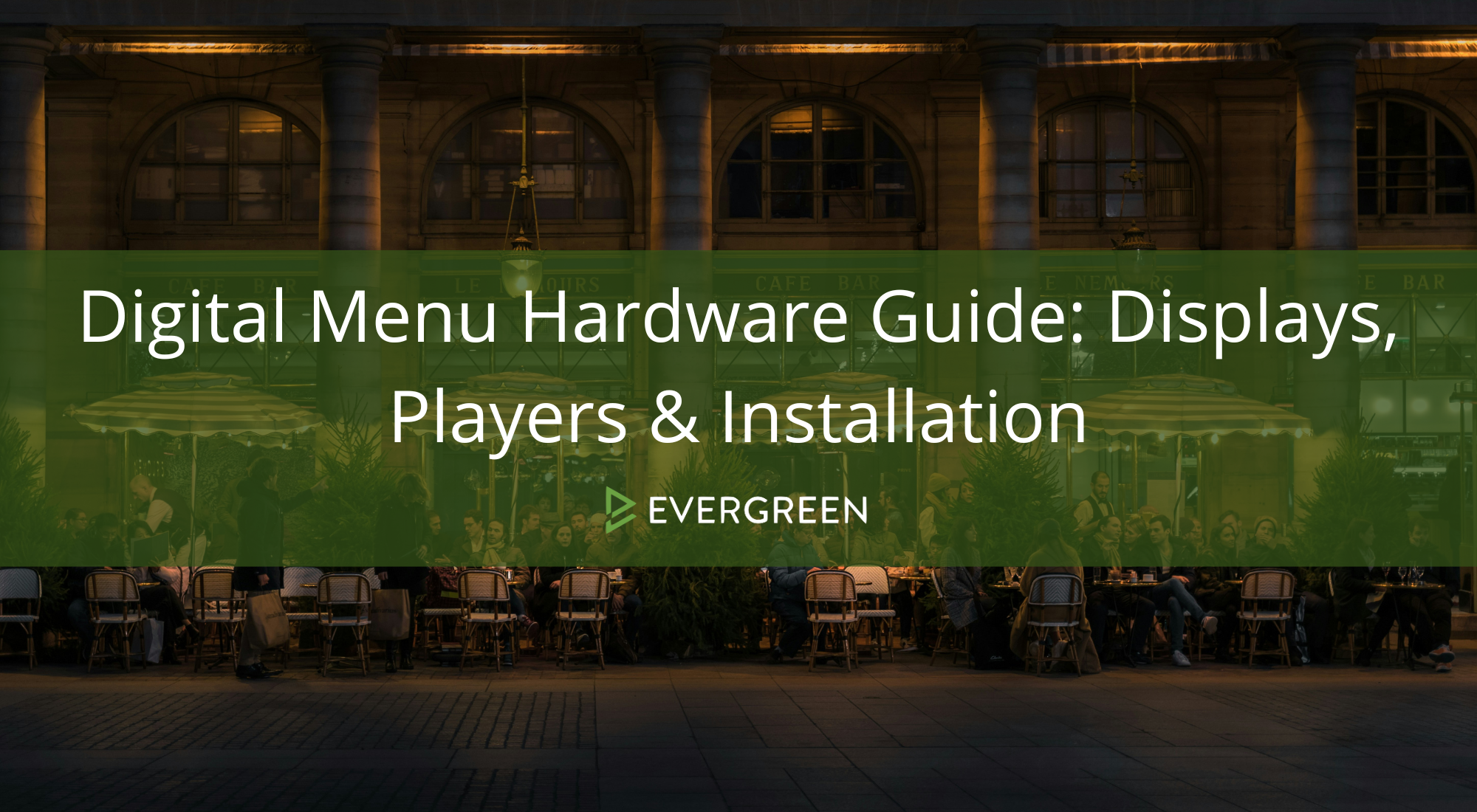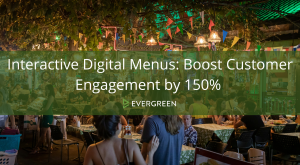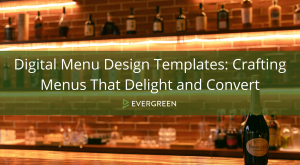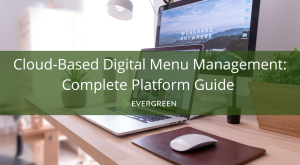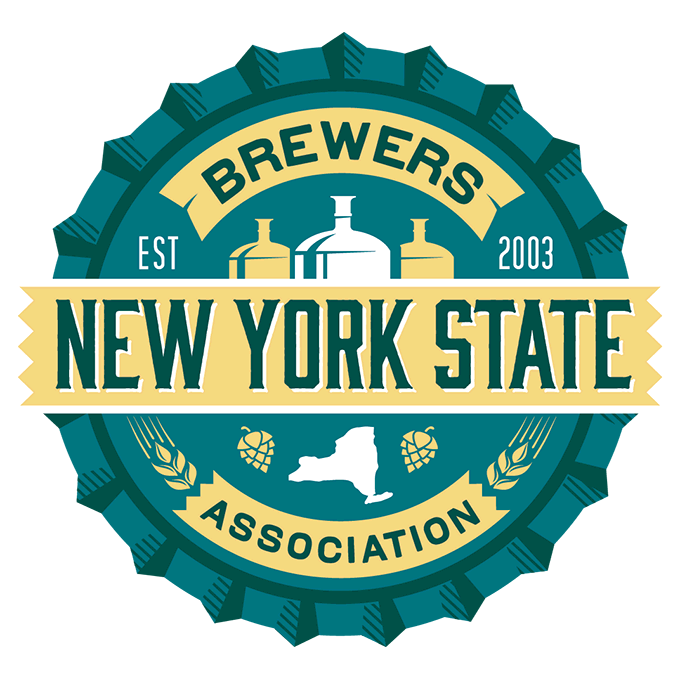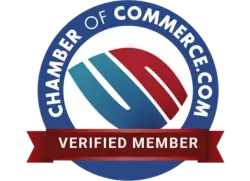Selecting the right hardware for digital menu systems determines long-term success, reliability, and return on investment. Hardware accounts for 60-70% of total digital menu costs, making informed decisions crucial for restaurant profitability. This guide provides technical specifications, vendor comparisons, and professional installation strategies that ensure optimal performance and longevity.
Commercial Display Technology Overview
Commercial vs Consumer Display Technology
Commercial Display Advantages:
Durability and Reliability:
Operating Hours: 16-24 hours daily operation capability vs 8-12 hours for consumer displays
Lifespan: 50,000-100,000 hours rated operation vs 20,000-40,000 hours consumer
Temperature Range: -20°C to +50°C operation vs 0°C to +40°C consumer range
Humidity Tolerance: 10-80% relative humidity vs 20-65% consumer tolerance
Vibration Resistance: Commercial-grade shock and vibration protection
Professional Features:
Multiple Inputs: HDMI, Display Port, VGA, and network connectivity options
Mounting Options: VESA mounting patterns and professional mounting hardware
Edge-to-Edge Design: Minimal bezels for video wall and multi-screen installations
Color Calibration: Factory calibration and ongoing color consistency
Remote Management: Network-based monitoring and control capabilities
Warranty and Support:
Extended Warranties: 3-5 year commercial warranties vs 1-2 year consumer
Business Support: Dedicated commercial support channels and response times
Replacement Programs: Advance replacement and loaner programs for business continuity
Professional Installation: Certified installation and configuration services
On-Site Service: Technician visits and repairs at customer location
Display Size and Viewing Distance Matrix
Optimal Sizing Guidelines:
Screen Size | Optimal Distance | Application | Customer Capacity |
32″ | 4-8 feet | Counter displays | 1-4 people |
43″ | 6-12 feet | Wall-mounted menus | 5-10 people |
55″ | 10-16 feet | Main dining areas | 10-20 people |
65″ | 12-20 feet | Large dining rooms | 20-30 people |
75″+ | 15-25 feet | Lobby/entrance | 30+ people |
Viewing Angle Considerations:
Horizontal Viewing: 178° minimum for wide restaurant layouts
Vertical Viewing: 178° for overhead and angled installations
Color Shift: Minimal color variation across viewing angles
Brightness Uniformity: Consistent brightness across screen surface
Contrast Ratio: Maintained contrast at extreme viewing angles
Resolution and Display Quality Standards
Resolution Requirements by Application:
Advantages: Crisp text, detailed food photography, future-proofing
Applications: 55″ and larger displays, close viewing distances
Content Requirements: 4K content creation and media player capability
Cost Impact: 20-40% premium over 1080p alternatives
Full HD 1080p (1920×1080):
Advantages: Lower cost, broad content compatibility, proven reliability
Applications: 32″-55″ displays, moderate viewing distances
Content Efficiency: Smaller file sizes and lower bandwidth requirements
Budget Consideration: Optimal cost-performance balance for most applications
Color Accuracy and Brightness:
Color Gamut: sRGB standard minimum, DCI-P3 preferred for premium applications
Color Temperature: 6500K standard for natural color reproduction
Brightness: 300-500 nits indoor, 1000+ nits for window displays
Contrast Ratio: 3000:1 minimum, 5000:1+ preferred for image quality
Uniformity: <10% brightness variation across screen surface
Media Player Technology and Selection
System-on-Chip (SoC) vs External Players
System-on-Chip Displays:
Advantages:
Integration: Built-in processing eliminates separate media player
Simplicity: Reduced cable management and installation complexity
Reliability: Fewer components and connection points for potential failure
Cost Efficiency: Lower total system cost including installation
Space Saving: Clean installation with minimal external hardware
Limitations:
Performance: Limited processing power compared to dedicated players
Upgradability: Cannot upgrade processing without replacing entire display
Flexibility: Limited software options and customization capabilities
Heat Management: Processing heat generated within display enclosure
Repair Complexity: Display replacement required for processor failures
External Media Players:
Advantages:
Performance: Dedicated processing power for complex content and features
Upgradability: Easy hardware upgrades without display replacement
Flexibility: Wide range of player options and operating systems
Serviceability: Independent replacement and repair of processing components
Cooling: Separate thermal management for optimal performance
Considerations:
Complexity: Additional hardware requiring mounting and cable management
Cost: Higher initial cost including player and installation
Maintenance: Multiple components requiring separate service and updates
Space Requirements: Additional mounting space and cable routing
Power Management: Separate power supplies and management systems
Operating System Platforms
Android-Based Players:
Advantages:
App Ecosystem: Extensive application library and development community
Flexibility: Customizable interface and functionality options
Integration: Easy integration with mobile apps and cloud services
Cost: Lower cost options from multiple manufacturers
Familiarity: Staff familiarity with Android interface and operations
Professional Android Players:
BrightSign XT1144: $599, enterprise-grade Android with professional support
IAdea XMP-7300: $449, commercial Android player with centralized management
ViewSonic CDE5510: $399, integrated Android display solution
Windows-Based Systems:
Advantages:
Software Compatibility: Full Windows software compatibility and features
Performance: High-performance computing capabilities for complex applications
Integration: Seamless integration with Windows-based business systems
Remote Management: Enterprise-grade remote management and administration
Security: Advanced security features and enterprise policy management
Professional Windows Players:
Intel NUC Pro: $600-1200, compact high-performance computing
HP EliteDesk Mini: $500-1000, business-grade compact desktop
Lenovo ThinkCentre Tiny: $450-900, enterprise reliability and support
Linux-Based Solutions:
Advantages:
Stability: Rock-solid reliability for 24/7 commercial operation
Security: Minimal attack surface and robust security architecture
Performance: Optimized performance for digital signage applications
Cost: Lower licensing costs and total cost of ownership
Customization: Complete customization and white-label capabilities
Linux Signage Players:
BrightSign 4K1142: $399, purpose-built Linux signage player
NovoDS Professional: $299, Linux-based cloud-managed player
Rise Vision Chromebox: $199, Chrome OS based digital signage solution
Performance Specifications and Requirements
Processing Power Requirements:
Basic Digital Signage:
CPU: Dual-core ARM or x86 processor minimum
RAM: 2GB DDR3/DDR4 for smooth operation
Storage: 16GB eMMC or SSD for content and OS
Graphics: Integrated graphics sufficient for 1080p content
Network: 802.11n WiFi or Gigabit Ethernet connectivity
Advanced Interactive Systems:
CPU: Quad-core x86 processor for responsive interaction
RAM: 8GB DDR4 for multi-tasking and smooth performance
Storage: 128GB SSD for fast application loading and content
Graphics: Dedicated graphics for smooth animations and transitions
Network: 802.11ac WiFi and Gigabit Ethernet for reliability
Enterprise Multi-Screen Systems:
CPU: Intel Core i5/i7 or AMD Ryzen equivalent for maximum performance
RAM: 16GB+ DDR4 for complex content and multi-screen support
Storage: 256GB+ NVMe SSD for optimal performance and reliability
Graphics: Dedicated graphics card for multiple 4K displays
Network: Dual network connections for redundancy and bandwidth
Network Infrastructure and Connectivity
Bandwidth Requirements and Planning
Content Delivery Bandwidth:
Static Content Systems:
Initial Setup: 50-100 MB per display for content download
Daily Updates: 10-50 MB per display for menu changes and promotions
Peak Usage: 1-5 Mbps burst during simultaneous updates
Steady State: <1 Mbps for monitoring and small updates
Recommended: 10 Mbps minimum per location for reliable operation
Dynamic Content Systems:
Live Content: 2-10 Mbps per display for real-time content streaming
Interactive Features: 5-20 Mbps for touch-screen and user interaction
Video Content: 15-50 Mbps for high-quality video streaming
Social Media: 2-5 Mbps for live social media feed integration
Recommended: 25+ Mbps per location for comprehensive features
Enterprise Systems:
Multi-Location: Centralized content distribution requiring significant bandwidth
Real-Time Analytics: Continuous data transmission for performance monitoring
Remote Management: Management traffic for system monitoring and control
Backup Systems: Additional bandwidth for redundancy and failover
Recommended: 100+ Mbps for multi-location enterprise deployments
Network Security and Reliability
Security Infrastructure:
VPN Connectivity: Secure tunnels for sensitive business data transmission
Firewall Protection: Network-level security and access control policies
Device Authentication: Certificate-based device authentication and authorization
Encryption: End-to-end encryption for content and management traffic
Monitoring: Network security monitoring and intrusion detection systems
Reliability and Redundancy:
Primary Connection: High-speed cable or fiber internet for primary connectivity
Backup Connection: Cellular or satellite backup for continuity during outages
Load Balancing: Multiple connection utilization for performance and reliability
Failover Systems: Automatic switching between connections during failures
Quality of Service: Traffic prioritization ensuring digital signage performance
WiFi vs Wired Connectivity
Wired Ethernet Advantages:
Reliability: Consistent performance unaffected by wireless interference
Speed: Gigabit speeds for large content transfers and updates
Security: Physical connection security reducing wireless attack vectors
Latency: Low latency for real-time interactive applications
Interference: No wireless interference from other devices or networks
WiFi Implementation Considerations:
WiFi 6 Standard: Latest 802.11ax for maximum performance and efficiency
Enterprise Access Points: Commercial-grade equipment for reliability and management
Channel Management: Proper channel selection avoiding interference and congestion
Signal Strength: Strong signal coverage throughout installation areas
Device Limits: Access point capacity planning for multiple concurrent devices
Hybrid Approach:
Critical Displays: Wired connections for essential menu displays and POS integration
Flexible Installations: WiFi for temporary displays and mobile installations
Redundancy: Dual connectivity for maximum reliability and performance
Management: Centralized management of both wired and wireless connections
Monitoring: Comprehensive monitoring of all connection types and performance
Installation Planning and Professional Services
Site Assessment and Planning
Physical Environment Analysis:
Electrical Infrastructure: Power outlet locations, capacity, and electrical safety
Network Accessibility: Ethernet and WiFi coverage assessment and improvement needs
Mounting Surfaces: Wall construction, load-bearing capacity, and mounting options
Lighting Conditions: Ambient lighting levels and glare assessment for optimal placement
Traffic Patterns: Customer flow analysis for optimal display positioning and visibility
Space Planning and Design:
Viewing Angles: Optimal display positioning for maximum customer engagement
ADA Compliance: Accessibility requirements for display height and alternative access
Safety Considerations: Secure mounting preventing theft and accidental damage
Maintenance Access: Accessibility for cleaning, service, and component replacement
Future Expansion: Planning for additional displays and system growth
Technical Requirements Assessment:
Power Requirements: Electrical load calculation and outlet installation needs
Cooling Considerations: Ventilation and temperature management for equipment longevity
Cable Management: Professional cable routing and management for clean installation
Equipment Security: Secure storage and mounting for media players and networking equipment
Integration Points: Connection points for POS, networking, and other business systems
Professional Installation Services
Certified Installation Teams:
Manufacturer Certification: Factory-trained technicians with current certifications
Insurance and Bonding: Proper liability coverage and bonding for commercial work
Local Licensing: Electrical and low-voltage licensing as required by jurisdiction
Experience: Proven track record with similar restaurant installations
References: Verifiable references from recent commercial digital signage projects
Installation Process and Timeline:
Pre-Installation Survey: Detailed site assessment and installation planning
Permit Acquisition: Electrical and building permits as required by local codes
Equipment Staging: Delivery coordination and equipment preparation
Installation Execution: Professional mounting, wiring, and system configuration
Testing and Commissioning: Comprehensive system testing and performance validation
Quality Assurance and Warranty:
Installation Warranty: 1-3 year warranty on installation workmanship and materials
Performance Testing: Comprehensive testing of all system components and features
Documentation: Complete installation documentation and operating procedures
Training: Staff training on system operation, maintenance, and troubleshooting
Ongoing Support: Post-installation support and maintenance services
Mounting Solutions and Hardware
Wall Mounting Systems:
Standard Wall Mounts:
Fixed Mounts: $50-150, secure attachment for permanent installations
Tilting Mounts: $100-250, adjustable angle for optimal viewing and glare reduction
Articulating Mounts: $200-500, full motion for flexible positioning and maintenance access
Professional Installation: $200-500 per mount including labor and materials
Ceiling Mounting Solutions:
Drop-Down Mounts: $300-800, suspended displays for overhead viewing
Dual-Sided Mounts: $500-1200, back-to-back displays for maximum visibility
Motorized Mounts: $1000-3000, remote-controlled positioning and angle adjustment
Specialty Mounting: Custom solutions for unique architectural requirements
Freestanding Solutions:
Kiosk Systems:
Basic Kiosks: $800-2000, simple freestanding display solutions
Interactive Kiosks: $2000-8000, touch-screen capability with secure enclosures
Custom Kiosks: $5000-20000, branded solutions matching restaurant design
Mobile Kiosks: $1500-5000, portable solutions for flexible positioning
Floor Stands and Pedestals:
Adjustable Stands: $200-600, height and angle adjustment for optimal positioning
Weighted Bases: $300-800, stable solutions preventing tip-over and theft
Locking Enclosures: $500-1500, security features protecting equipment and displays
Cable Management: Integrated solutions for clean cable routing and management
Cost Analysis and Budget Planning
Hardware Investment Breakdown
Basic Digital Menu System (per screen):
32″ Commercial Display: $600-1200
Media Player: $200-500
Mounting Hardware: $100-300
Installation: $300-800
Total Basic System: $1200-2800 per screen
Professional System (per screen):
43″-55″ Commercial Display: $1200-3000
Professional Media Player: $400-1000
Professional Mounting: $200-600
Professional Installation: $500-1200
Network Infrastructure: $200-800
Total Professional System: $2500-6600 per screen
Enterprise System (per screen):
55″-65″ Premium Display: $2500-6000
Enterprise Media Player: $800-2000
Custom Mounting Solution: $500-1500
Professional Installation: $800-2000
Integration Services: $1000-5000
Total Enterprise System: $5600-16500 per screen
Total Cost of Ownership (TCO) Analysis
Three-Year TCO Comparison:
Basic System:
Initial Investment: $2000 per screen
Annual Maintenance: $200 per screen
Annual Software: $300 per screen
Annual Support: $100 per screen
Three-Year TCO: $3800 per screen
Professional System:
Initial Investment: $4500 per screen
Annual Maintenance: $400 per screen
Annual Software: $600 per screen
Annual Support: $300 per screen
Three-Year TCO: $8400 per screen
Enterprise System:
Initial Investment: $10000 per screen
Annual Maintenance: $800 per screen
Annual Software: $1200 per screen
Annual Support: $600 per screen
Three-Year TCO: $18600 per screen
ROI Calculations and Payback Analysis
Revenue Enhancement Factors:
Average Order Value Increase: 15-35% through enhanced presentation and upselling
Customer Throughput: 10-25% improvement through faster ordering and reduced wait times
Promotional Effectiveness: 20-50% increase in special offer response rates
Labor Cost Reduction: 10-20% savings in menu management and customer explanation time
Menu Update Efficiency: 80-95% reduction in printing and distribution costs
Payback Period Calculations:
Small Restaurant (3 screens, $25 average check, 100 customers/day):
Investment: $8500 total system cost
Monthly Revenue Increase: $1875 (25% AOV increase)
Monthly Cost Savings: $400 (printing and labor)
Monthly Net Benefit: $2275
Payback Period: 3.7 months
Medium Restaurant (6 screens, $35 average check, 200 customers/day):
Investment: $25000 total system cost
Monthly Revenue Increase: $5250 (25% AOV increase)
Monthly Cost Savings: $800 (printing and labor)
Monthly Net Benefit: $6050
Payback Period: 4.1 months
Large Restaurant (12 screens, $45 average check, 400 customers/day):
Investment: $75000 total system cost
Monthly Revenue Increase: $13500 (25% AOV increase)
Monthly Cost Savings: $2000 (printing and labor)
Monthly Net Benefit: $15500
Payback Period: 4.8 months
Maintenance and Support Considerations
Preventive Maintenance Programs
Daily Maintenance Tasks:
Screen Cleaning: Proper cleaning solutions and techniques for display longevity
Visual Inspection: Check for damage, loose connections, and proper operation
Content Verification: Ensure accurate pricing, availability, and promotional content
Performance Monitoring: System responsiveness and loading time assessment
Environmental Check: Temperature, ventilation, and mounting security verification
Weekly Maintenance Tasks:
Software Updates: Operating system and application updates for security and performance
Backup Verification: Content and configuration backup completion and integrity
Network Performance: Internet connectivity speed and reliability testing
Security Scan: Malware and security threat detection and resolution
Performance Analytics: System performance review and optimization opportunities
Monthly Maintenance Tasks:
Deep Cleaning: Thorough cleaning of displays, media players, and mounting hardware
Hardware Inspection: Detailed examination of all components for wear and potential issues
Network Security: Firewall and security system review and updates
Content Archive: Old content removal and storage optimization
Performance Review: Comprehensive system performance analysis and improvement planning
Warranty and Service Support
Manufacturer Warranty Programs:
Standard Warranty: 1-3 years parts and labor coverage for defective components
Extended Warranty: 4-5 year coverage options for long-term protection
Advance Replacement: Next-business-day replacement for critical system components
On-Site Service: Technician visits for complex repairs and system restoration
24/7 Support: Round-the-clock technical support for urgent issues and emergencies
Third-Party Service Options:
Local Service Providers: Regional technicians for routine maintenance and repairs
National Service Networks: Standardized service across multiple locations
Remote Monitoring: Proactive monitoring and issue detection before failures occur
Performance Optimization: Regular system tuning and improvement services
Training Programs: Ongoing staff education on system operation and maintenance
Troubleshooting and Issue Resolution
Common Hardware Issues:
Display Problems:
Screen Flickering: Power supply issues, cable problems, or display driver failures
Color Distortion: Calibration drift, graphics driver issues, or display panel aging
Dead Pixels: Manufacturing defects or physical damage requiring display replacement
Brightness Issues: Backlight failures, power problems, or environmental factors
Touch Problems: Calibration issues, driver problems, or physical obstruction
Media Player Issues:
Boot Failures: Storage corruption, power issues, or hardware component failures
Connectivity Problems: Network configuration, hardware failures, or service provider issues
Performance Degradation: Storage issues, memory problems, or software conflicts
Content Problems: File corruption, format incompatibility, or storage capacity issues
Security Issues: Malware infections, unauthorized access, or configuration vulnerabilities
System Integration Problems:
POS Connectivity: Network issues, software compatibility, or configuration problems
Content Management: Server connectivity, authentication issues, or synchronization problems
Payment Processing: Security protocols, network connectivity, or software integration issues
Analytics Problems: Data collection issues, reporting failures, or database connectivity problems
Remote Management: VPN connectivity, authentication failures, or firewall configuration issues
Vendor Selection and Procurement
Leading Hardware Manufacturers
Premium Display Manufacturers:
Samsung Commercial Displays:
Product Range: 32″-98″ commercial displays with comprehensive feature sets
Technology: QLED, LED, and outdoor display options with superior image quality
Software: Tizen platform with extensive app ecosystem and management tools
Warranty: 3-year standard warranty with extended options and global support
Market Position: Premium pricing with industry-leading technology and reliability
LG Commercial Solutions:
Product Range: 32″-86″ displays with webOS platform integration
Technology: OLED and LED options with excellent color accuracy and viewing angles
Software: webOS signage platform with cloud-based management capabilities
Warranty: 3-year commercial warranty with advance replacement programs
Market Position: Competitive pricing with strong feature sets and reliability
Professional Media Player Manufacturers:
BrightSign Professional:
Product Range: Purpose-built digital signage players from basic to enterprise levels
Performance: Optimized hardware and software for 24/7 commercial operation
Management: BrightSign Network cloud-based management and monitoring platform
Support: Comprehensive technical support and professional services
Market Position: Industry standard for professional digital signage applications
Intel NUC Commercial:
Product Range: Compact high-performance computers for demanding applications
Performance: Full Windows compatibility with enterprise-grade reliability
Scalability: Modular design allowing performance upgrades and customization
Support: Business-grade support with global service network
Market Position: Premium performance for complex interactive and integration requirements
Procurement Strategies and Best Practices
Request for Proposal (RFP) Development:
Technical Specifications: Detailed hardware requirements and performance criteria
Integration Requirements: POS, network, and software integration specifications
Service Expectations: Installation, training, and ongoing support requirements
Timeline Expectations: Project milestones and completion deadlines
Budget Parameters: Investment ranges and payment terms preferences
Vendor Evaluation Criteria:
Technical Capability: Hardware specifications and software platform capabilities
Experience: Relevant restaurant industry experience and reference accounts
Support Structure: Local support availability and response time commitments
Financial Stability: Vendor financial health and long-term viability
Total Cost: Comprehensive cost analysis including all expenses and ongoing fees
Contract Negotiation Points:
Performance Guarantees: Service level agreements and performance commitments
Warranty Terms: Coverage periods, response times, and replacement procedures
Payment Terms: Payment schedules, milestone payments, and financing options
Change Management: Procedures for scope changes and additional requirements
Termination Clauses: Contract termination procedures and data ownership rights
Future-Proofing and Technology Evolution
Emerging Display Technologies
MicroLED Displays:
Advantages: Superior brightness, contrast, and energy efficiency
Timeline: Commercial availability 2026-2027 for restaurant applications
Cost Impact: Premium pricing initially, cost reduction expected by 2028-2030
Applications: High-end installations and outdoor applications
Preparation: Planning for mounting and power infrastructure upgrades
Transparent and Flexible Displays:
Applications: Creative installations and unique architectural integration
Technology Maturity: Early adoption phase with limited commercial options
Cost Considerations: Significant premium over traditional display technology
Installation Complexity: Specialized mounting and integration requirements
Market Timeline: Mainstream adoption expected 2027-2030
Connectivity and Integration Evolution
5G and Edge Computing:
Benefits: Ultra-low latency and high-bandwidth connectivity for advanced features
Applications: Real-time personalization and cloud-based processing capabilities
Infrastructure: 5G network rollout and edge computing infrastructure development
Timeline: Widespread availability 2025-2027 in urban markets
Investment: Gradual infrastructure upgrades to support advanced connectivity
IoT Integration:
Sensor Integration: Environmental monitoring and customer presence detection
Smart Building: Integration with lighting, HVAC, and security systems
Data Analytics: Enhanced customer behavior analysis and operational insights
Automation: Automated system responses to environmental and operational conditions
Security: Enhanced security requirements for IoT device management
Scalability and Upgrade Planning
Modular System Design:
Component Upgradeability: Media players and software separate from displays
Expansion Capability: Easy addition of new displays and system components
Integration Flexibility: Open standards and API compatibility for future enhancements
Management Scalability: Centralized management supporting growth and expansion
Investment Protection: Backward compatibility and gradual upgrade pathways
Technology Refresh Cycles:
Display Lifespan: 7-10 years for commercial displays under normal usage
Media Player Refresh: 3-5 years for optimal performance and feature availability
Software Updates: Regular updates and platform migrations as required
Network Infrastructure: Periodic upgrades for bandwidth and security requirements
Integration Updates: POS and system integration updates as business systems evolve
Building a Successful Digital Menu Hardware Foundation
The hardware foundation of digital menu systems directly impacts reliability, performance, and long-term ROI. Success requires balancing initial investment with long-term operational costs while planning for future technology evolution and business growth.
Key Decision Factors:
Business Requirements: Clear understanding of current needs and future growth plans
Quality Investment: Commercial-grade hardware for reliability and longevity
Professional Installation: Certified technicians and proper installation practices
Comprehensive Support: Warranty coverage and ongoing maintenance programs
Future-Proofing: Scalable systems and upgrade pathways for technology evolution
Implementation Success Framework:
Assessment: Thorough analysis of technical requirements and business objectives
Planning: Detailed specifications and professional installation design
Procurement: Vendor evaluation and comprehensive contract negotiation
Installation: Professional installation and comprehensive system testing
Maintenance: Proactive maintenance and performance optimization programs
The investment in quality hardware and professional installation pays dividends in system reliability, performance, and customer experience that extend far beyond the initial technology deployment. Restaurants that prioritize hardware excellence position themselves for long-term success in the competitive digital dining market.

